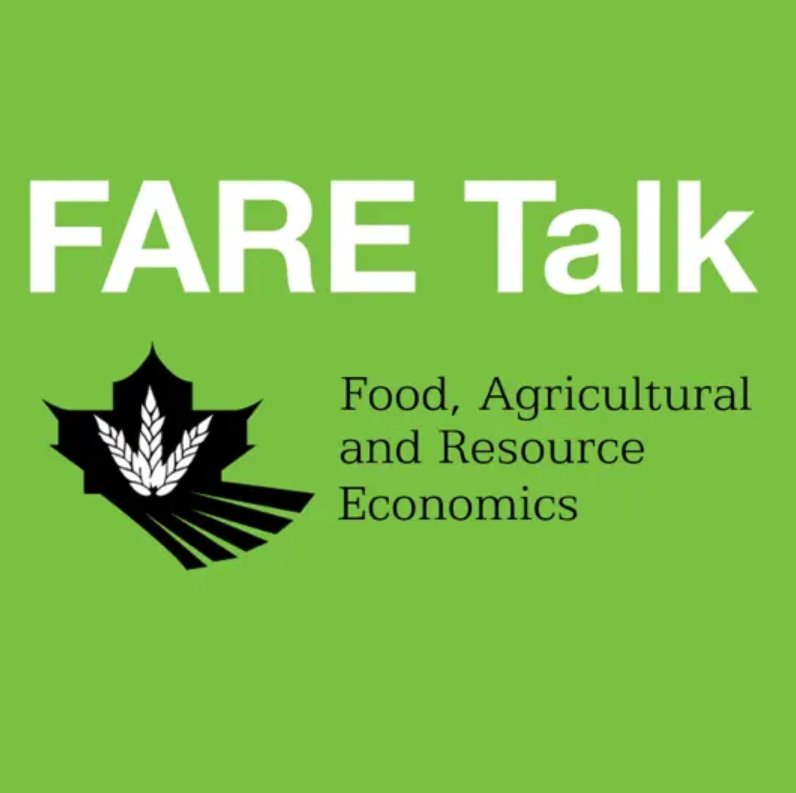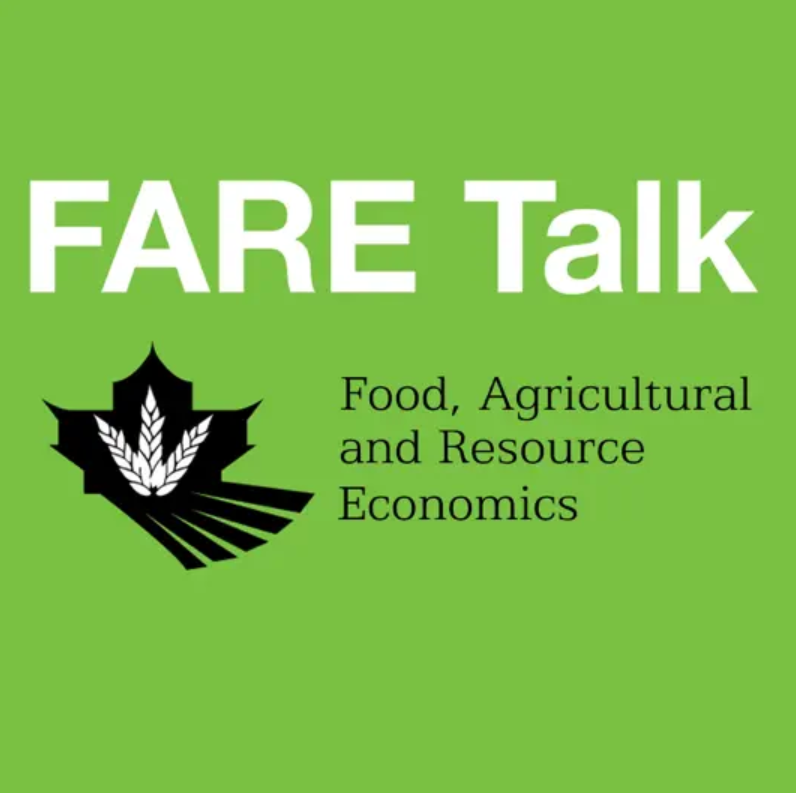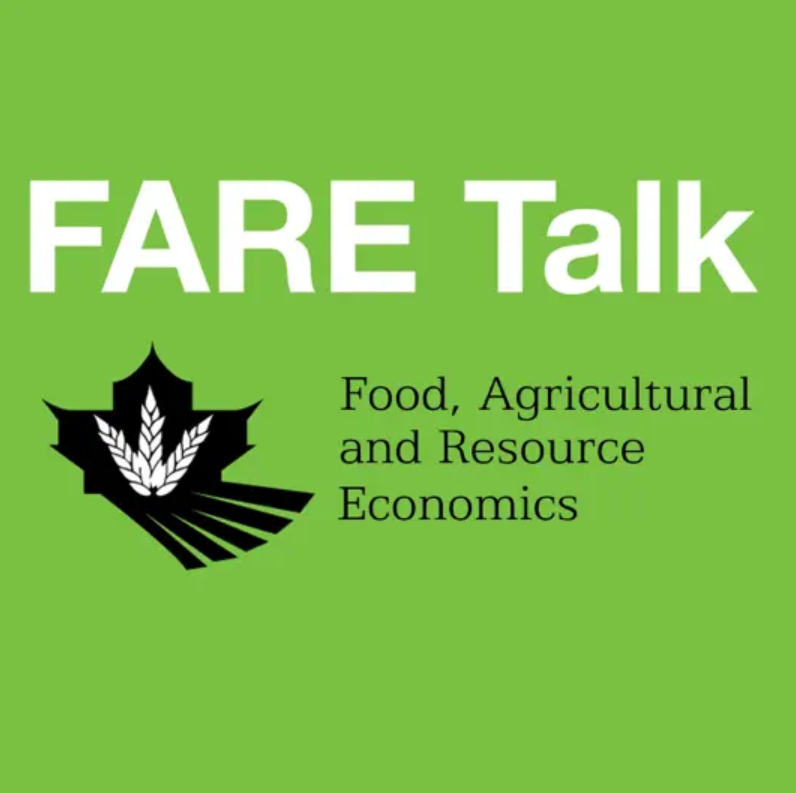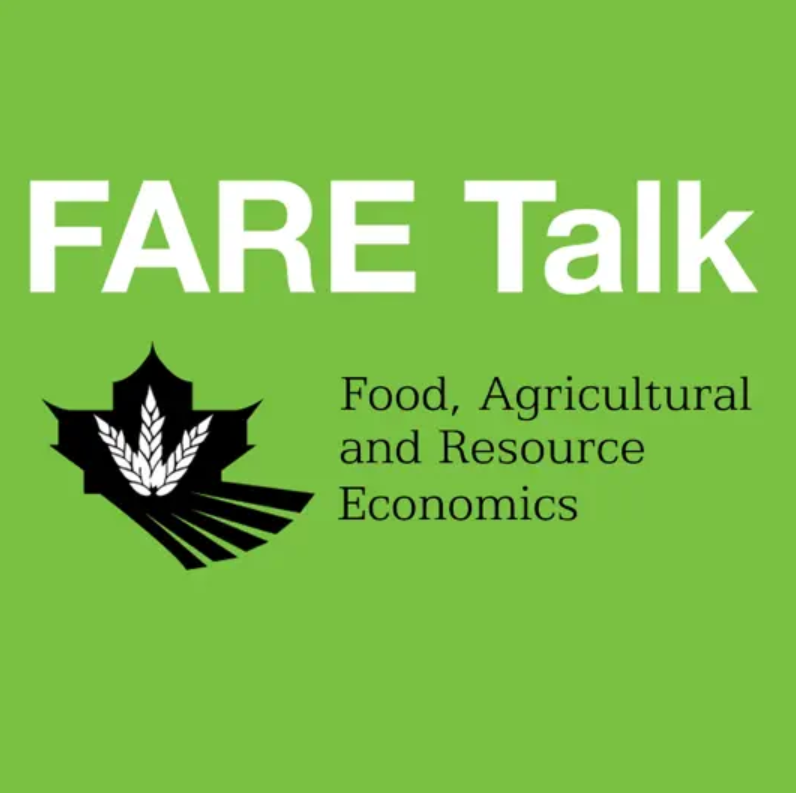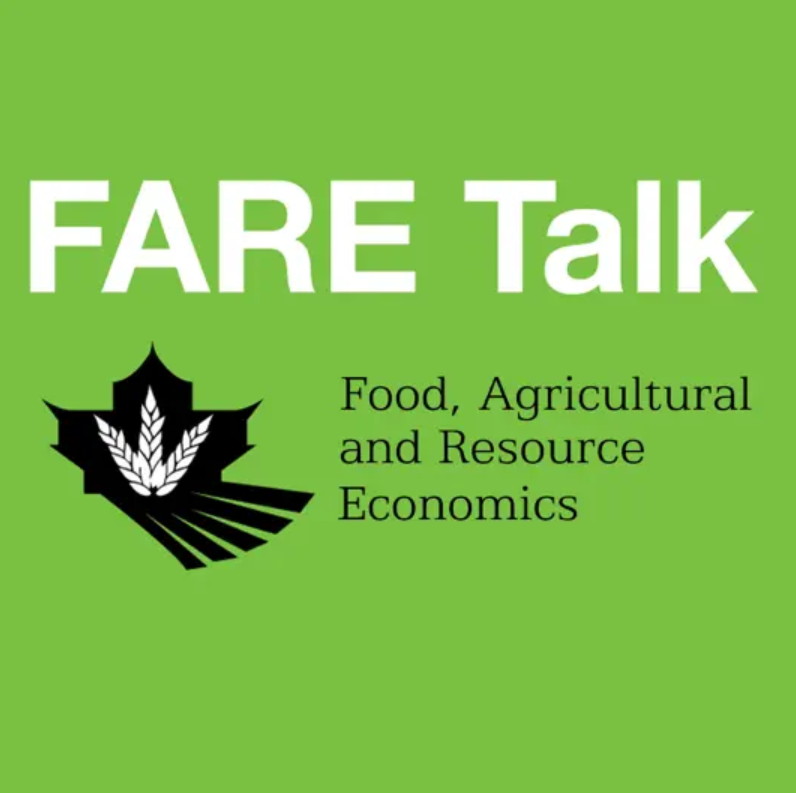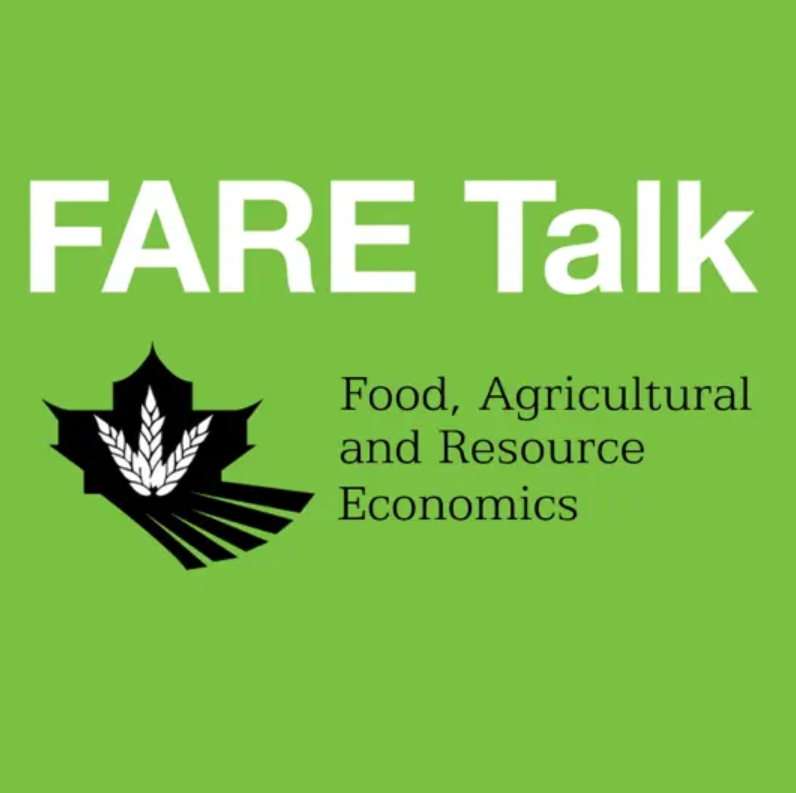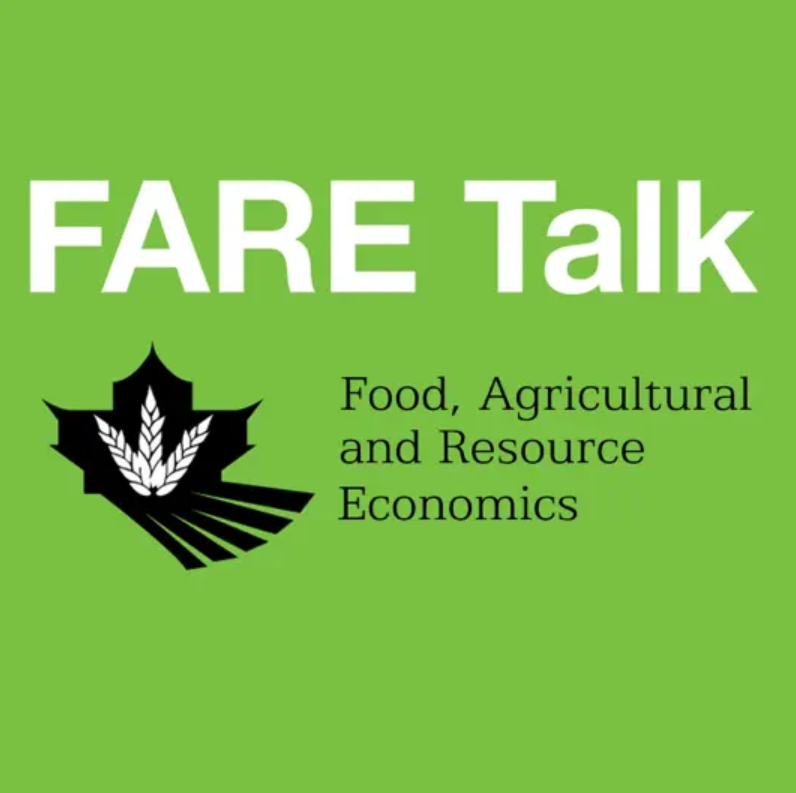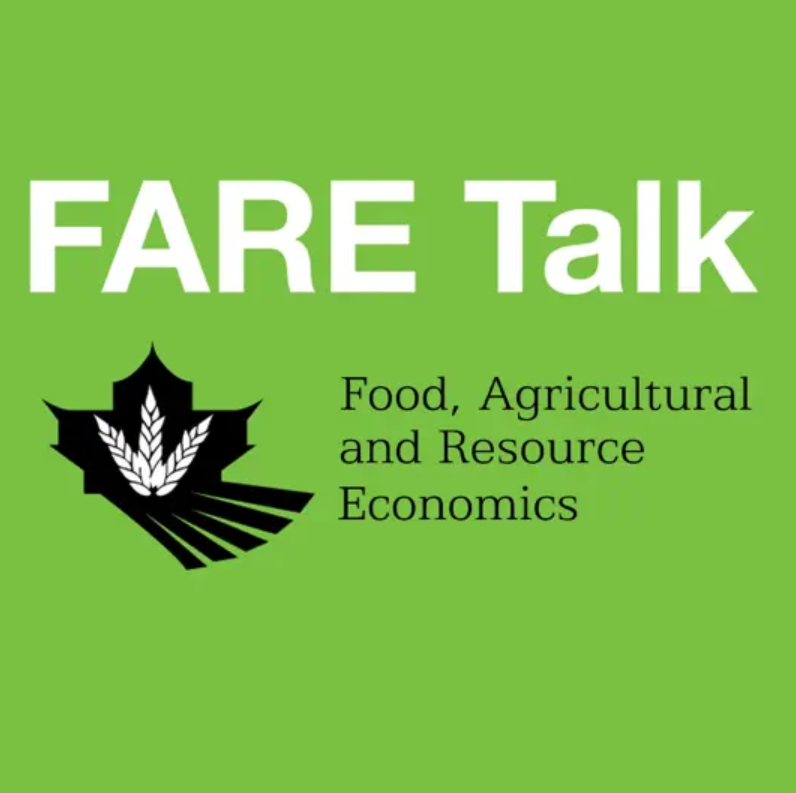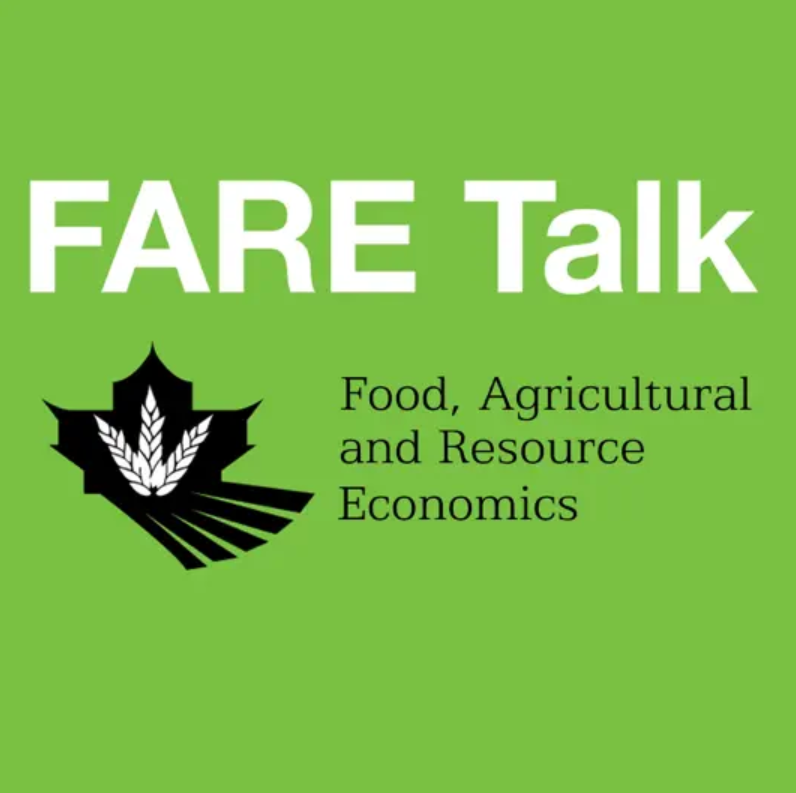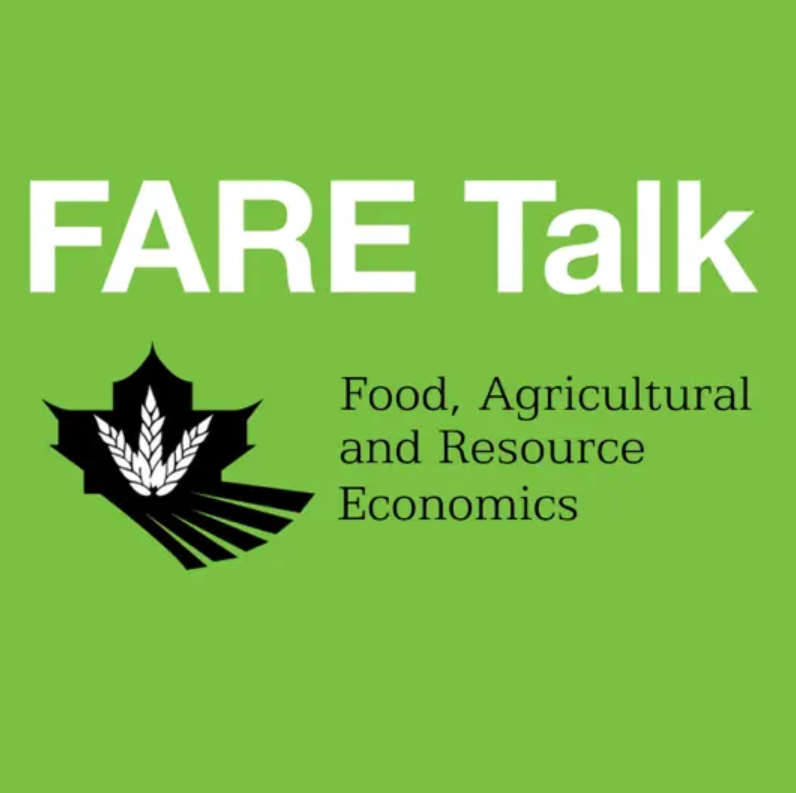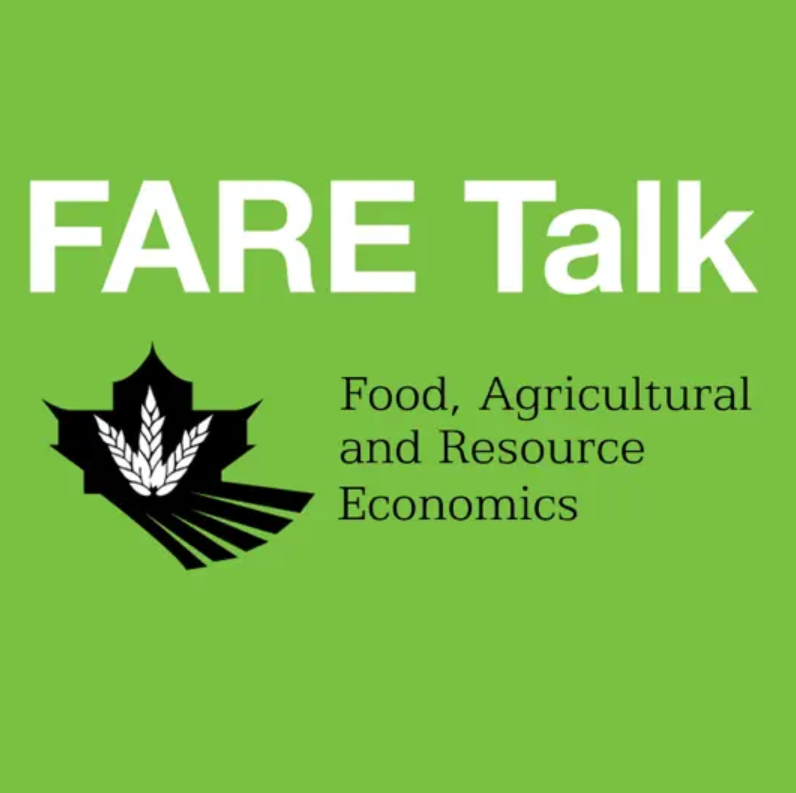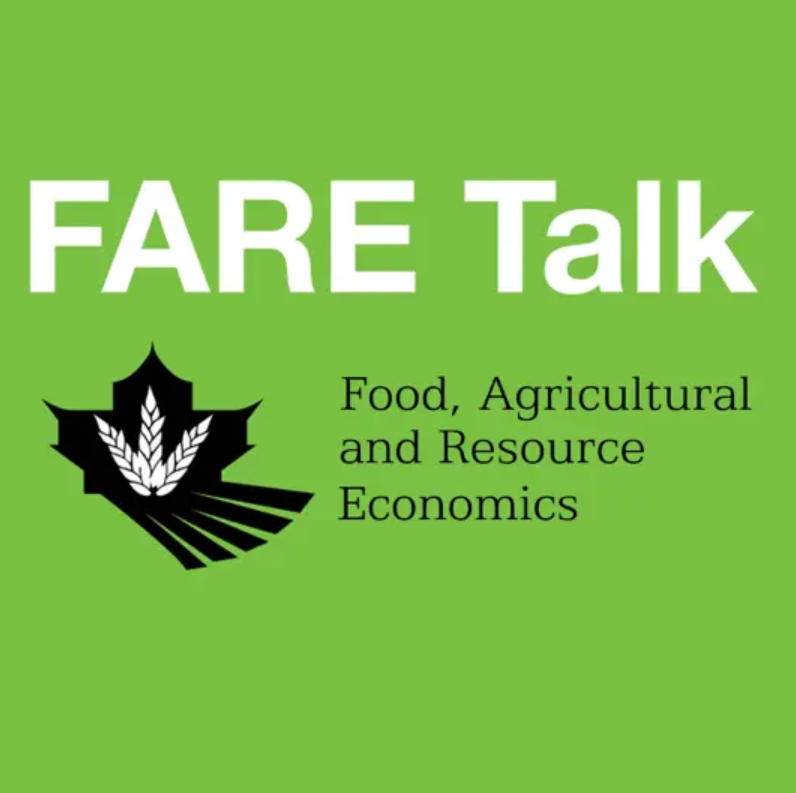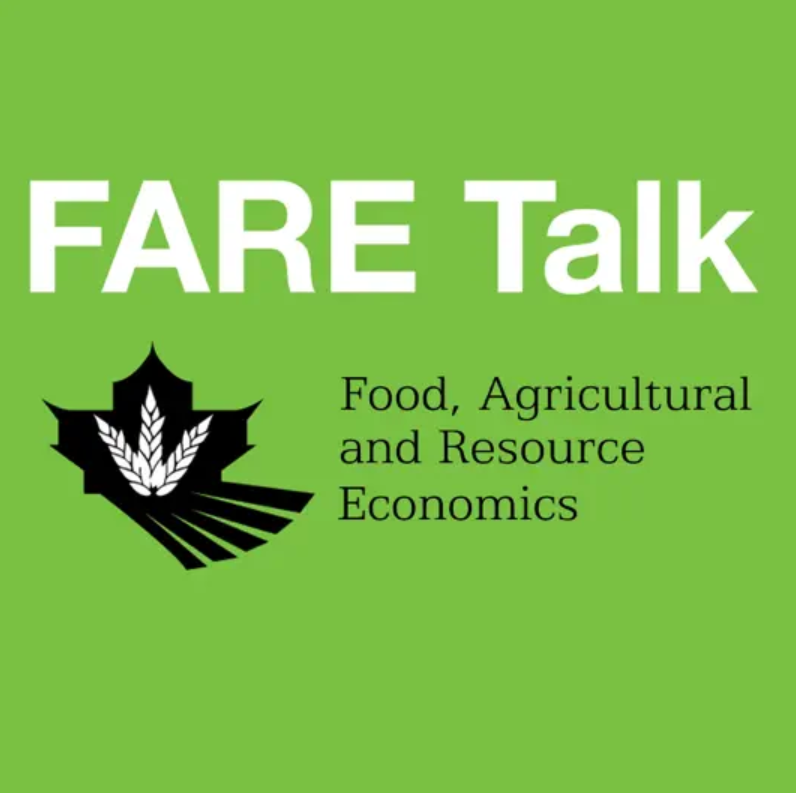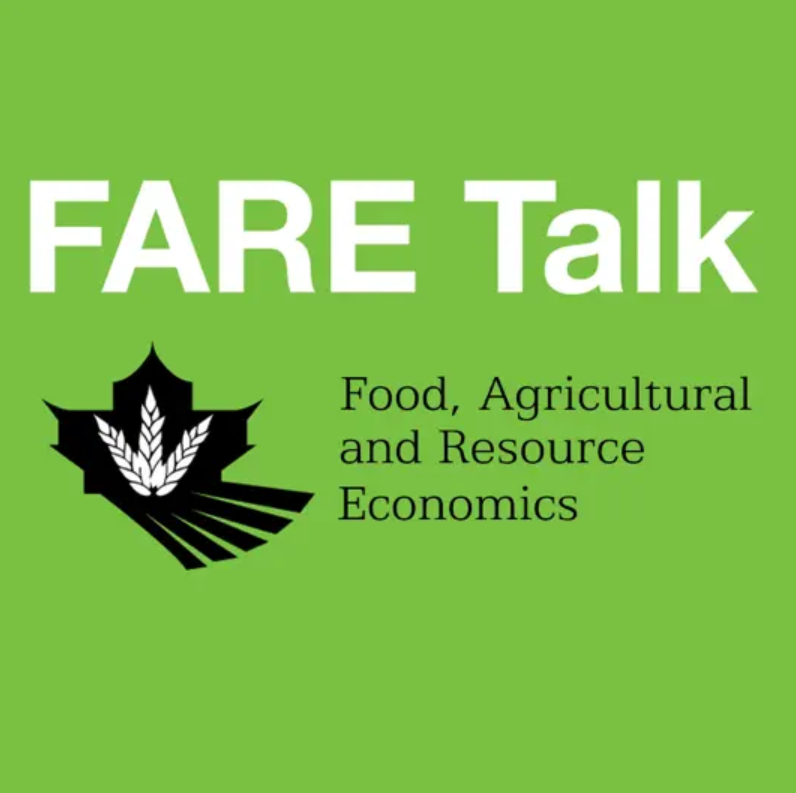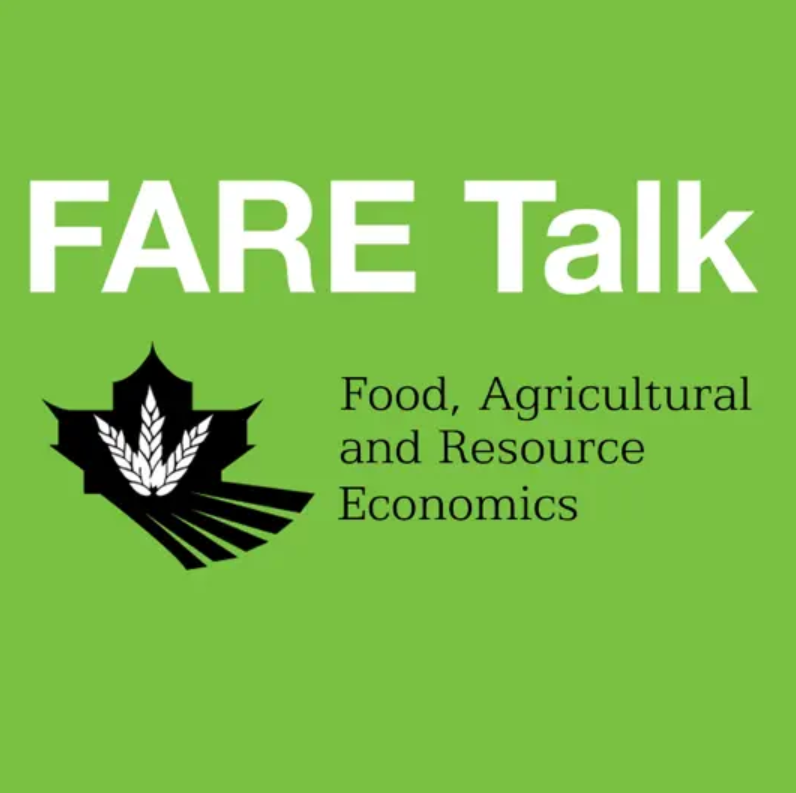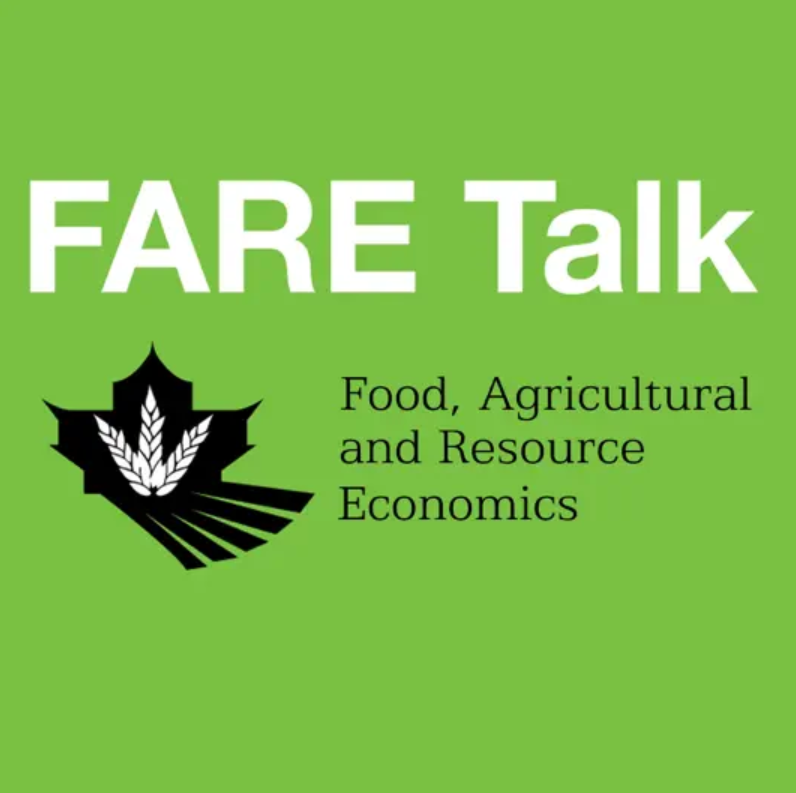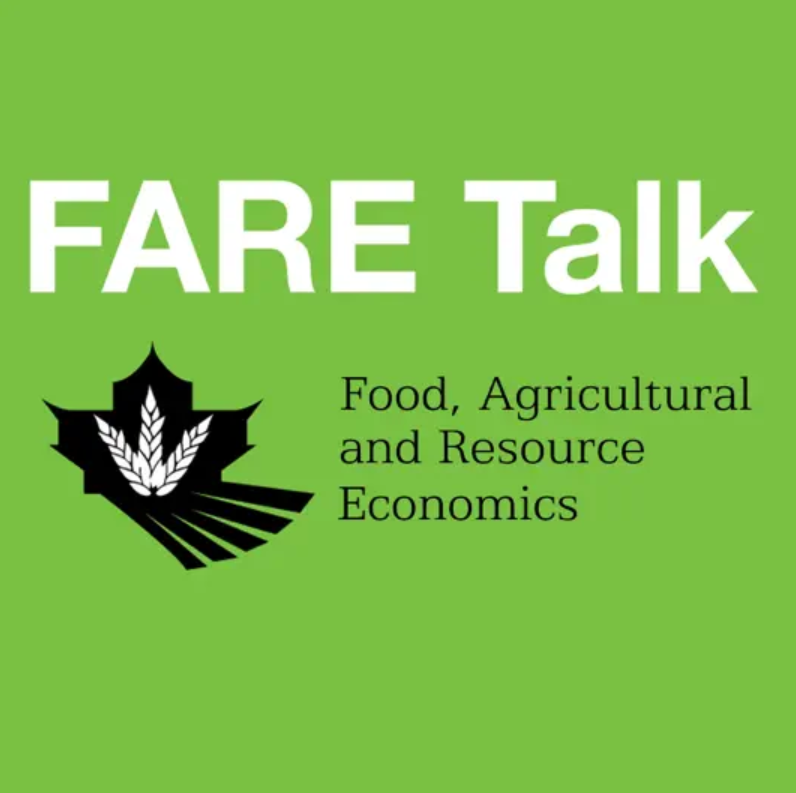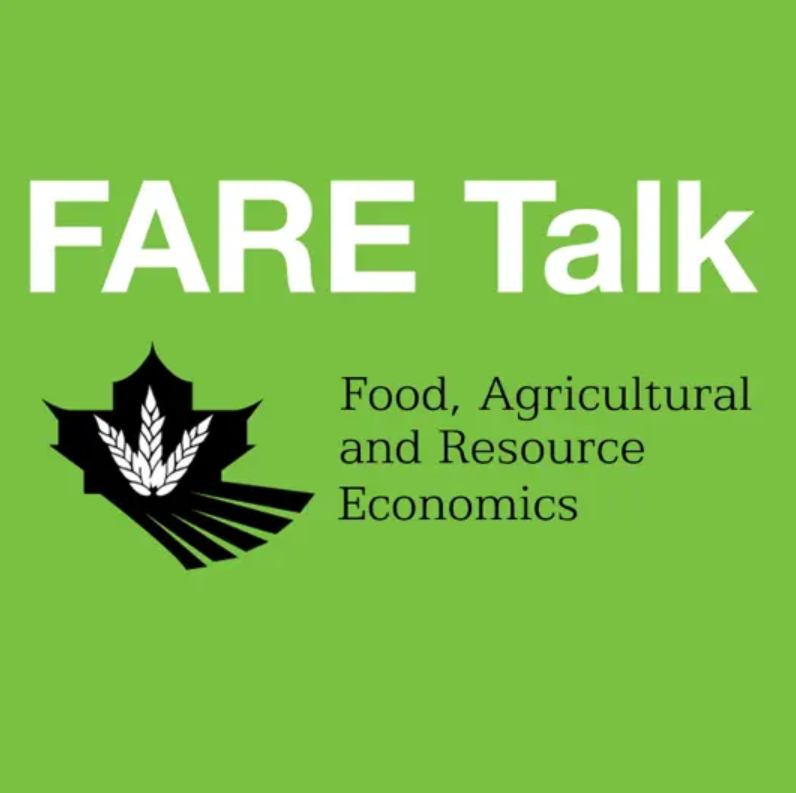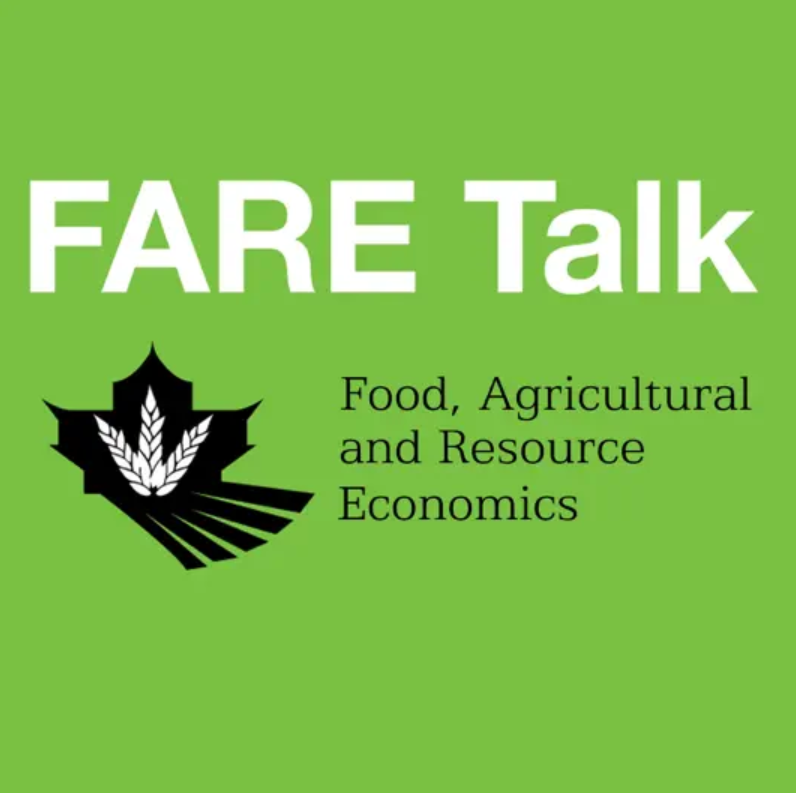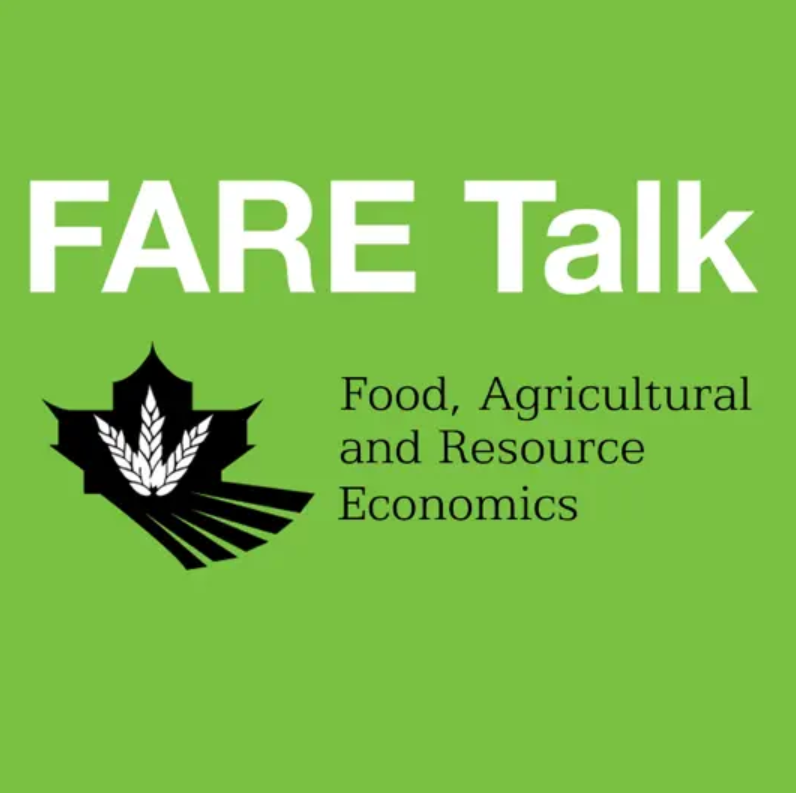The Canadian Wheat Board (CWB): Assessing the future of wheat marketing in Canada. - October 20th, 2011
Description
Dr. Murray Fulton and Dr. Brady Deaton discuss the Canadian Wheat Board (CWB)
Transcript
Brady Deaton: Welcome to FARE Talk where we set out to provide enduring discussions on contemporary topics relevant to our economy with particular emphasis on food, agriculture and the environment. My name is Brady Deaton Jr. Of the Department of Food, Agriculture and Resource Economics at the University of Guelph. I'll be your host.
Today, Dr. Murray Fulton and I will be discussing what's going on with the Canadian Wheat Board. Murray is an agricultural economist and a professor in the Johnson-Shoyama Graduate School of Public Policy at the university of Saskatchewan. He has a long interest in Agricultural policy and in marketing systems. He is the co-author of a report by the Economic Council of Canada titled, Canadian Agricultural Policy and Prairie Agriculture, and has extensively studied the structure and behavior of the agricultural marketing systems.
Murray, thanks for being with us.
Murray Fulton: Oh it's a real pleasure.
Brady: Murray, what's going on. How do we start this. How do we start to understand what's going on with the Canadian Wheat Board. Keep in mind there'll be people tuning in who aren't aware of the current situation.
Murray: Good starting point Brady. Here's what's going on. What we're seeing in Canada over this next year, I mean, by next summer, we will have in place in Canada a completely different marketing system for wheat and that includes Durum and Barley for human consumption, malt and barley.
When I say a completely different system, I mean that in the strongest sense. What is happening is the replacement of a marketing system that, while it's evolved in some considerable ways, has retained the major fundamental structure that it acquired back in the 1930s and the 1940s. That's a mixture of an administrative and market system with Canadian Wheat Board playing a key role in that grain handling and transportation system for those grains, wheat and barley, in Western Canada.
What we're going to have by next July is some kind of much more market oriented system without the Wheat Board, at least without the Wheat Board as a compulsory marketing agency, which has been the case since the 1930s. There is still a question, I'll come to this at some point about whether or not a voluntary Wheat Board might be in place. But regardless of that central role, that the Canadian Wheat Board was playing, will no longer exist.
There is considerable discussion going on by farm organizations, the industry participants, these are the railways, the elevator companies, the millers, as to exactly what kind of rules are going to be put in place come next July and August.
Brady: All right. One of the terms that's often used this Single Desk Selling Authority. My understanding is that that ensures that the Canadian Wheat Board can basically purchase all of the wheat and barley for export or human consumption. Is that for all of Canada or just particular provinces.
Murray: The Wheat board only applies to the Western wheat growing area. This includes the grain growing areas in [inaudible 00:03:40 ] Saskatchewan, and Alberta and up into the Peace River area as well. Wheat growing in Ontario does not for instance, does not come under the auspices of the Canadian Wheat Board.
You're right the term that is used is the Single Desk Selling. This is actually key to that central role that the Canadian Wheat Board has been playing. Just very quickly what this Single Desk means is that all farmers in the [inaudible 00:04:14 ] Wheat Board area are required by legislation to deliver their wheat or durum or barley for human consumption to the Canadian Wheat Board. The Canadian Wheat Board then on behalf of the farmers then markets that grain, both domestically and internationally.
What the board then .... This is an additional element in its, it's not strictly connected with the Single Desk though it's grown up with it. What the Wheat Board has done for the most part then is take that grain, all the receipts from that grain that it sells and offers back to farmers a single pool price. All farmers, basis the export position get the same price. Regardless of whether the grain that the farmer delivered to the Canadian Wheat Board was sold in November at a particular price or in May at a different price or even sometime in the middle of July at perhaps at a third price, all farmers would get exactly the same price.
Now, what I need to say is that, that's adjusted, the price that an individual farmer will get will be adjusted for where that farmer is located in the grain growing region. The reason is that, off of that price that the Wheat Board provides, has to come the cost of grain transportation and grain handling. Depending upon where you are and the kinds of distance you are to port, or the degree of competition that there might be between grain elevators, farmers will end up having a different deduction, one from another.
Brady: Okay, I want to work through, maybe a simple example of that, but I also want to then talk a little bit about the change that's coming because as I understand the change actually hasn't happened yet. I think there's some interesting nuances there. First let me just make sure I've got it straight.
If I'm a wheat farmer right now, under the Single Desk Selling Authority. Say, I've harvested my wheat crop, walk me through really quick, how I'll work with the elevator and the price that I'll receive. Again building off of what you said abstractly but say, I'm done with harvest, what happens to me now.
Murray: What farmers will have done and I won't give you all the gory details, but what they would have done in spring is signed a contract with the Canadian Wheat Board indicating roughly what their planting intentions were going to be so that they said, "Well, I'm going to be roughly seeding this much wheat, this much durum, for instance and malt and barley if that's what they were doing.
The Wheat Board has an indication of the amounts of grain roughly that are going to be out there. They adjust these planting intentions of course for yields that are occurring. The Wheat Board, if you like, has a basic idea of how much grain it has. It keep pretty good track of the quality that's coming in, if there is an early frost in a particular area, they know that that grains maybe marked down to a Number 2 or something like that.
As the Wheat Board, as their customers come forward and say, "We need grain of a particular type." They will go out to farmers and ask the farmers to deliver on those contracts that they had signed back in the spring. They may come and say, "In November, we want you to deliver 25% of that contract that you had signed." Farmers then would deliver that grain.
Here's where it's interesting. The farmers now have complete choice as to which elevator company they would like to deal with. What's happening at the same time is as the board puts out these calls to the farmers for grain, they, at the same time approach the elevator companies and have the elevator companies bid on the right to fulfill those contracts. For instance, Viterra, the largest grain handler may decide to bid on a particular amount and it is then up to Viterra to make arrangements with the railway to have sufficient cars in place.
Now, the railway also has to coordinate with the Canadian Wheat Board and I'll come back to that in just a second.
At the same time the elevator company has to go out and make sure it's offering the right kinds of incentives to farms to get that grain delivered, in this case to the Viterra elevators rather than to a competitor elevator.
You have, what I'm calling a mixture of an administrative system with the Wheat Board providing the broad demands that the system needs to meet and then having bidding going on or ordinary market competition to actually get the operational components to fit to those macro demands.
Let me just continue on that. A farmer will then say, "okay, I'm going to deliver to Viterra." They may for instance have a trucking subsidy in place that has encouraged them to go to Viterra, rather than to say one of the competitors. The farmer would deliver that. They would get, what's called and Advance Payment that pays them some proportion of what the wheat board anticipates will be the final payment due. The reason the board doesn't pay out the entire amount is that the board has to keep that contingency in place, in case the market should tank sometime in the future, the board would not be able to meet its obligations without incurring a deficit. This procedure occurs over the year, with farmers getting their Advance Payment.
At the end of the crop year, at the end of, sometime in July, the board totals up all the revenue that it had obtained, divides that through roughly by the amount of grain. This is done by various classes. You'll look at a top grade versus dropping down to a second grade and so forth and each of those will be done separately. They will take that total revenue, divide by the total number of bushels or tons that were sold and come up with that average price. The farmer then will get the difference between that final price and the initial price that they had been paid.
Now, often the board knows or has a pretty good sense part way through the year that they are going to be able to pay out a final price. They'll have some interim payments to farmers that get a little bit closer to that final price.
Now, meanwhile, the farmer also then has to pay the elevator company and the railway

